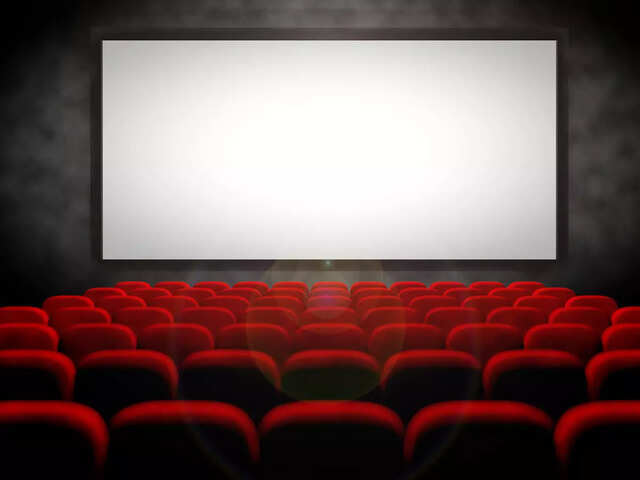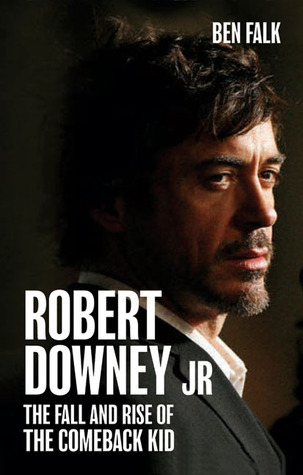For nearly two decades, the dominant narrative in Hollywood has been one of escalation. Bigger budgets, larger spectacles, and interconnected cinematic universes have ruled the box office, creating a landscape seemingly divided into two camps: the billion-dollar blockbusters and the micro-budget horror or indie darling. In this high-stakes environment, the mid-budget film—the intelligent thriller, the sophisticated romantic comedy, the character-driven drama—was declared all but extinct, a casualty of shifting studio priorities and a risk-averse mentality.
But a curious thing is happening in theaters and on streaming platforms. A film like Anyone But You, a straightforward romantic comedy, becomes a sleeper hit, grossing over $200 million globally. A24’s Everything Everywhere All at Once, made for a reported $25 million, sweeps the Oscars. The Black Phone, a chillingly effective horror-thriller, terrifies audiences and earns $161 million. These are not flukes; they are signals of a market correction.
The mid-budget film, long relegated to the sidelines, is making a surprising and robust comeback. This resurgence isn’t about a return to the old ways, but a fascinating evolution driven by new economic models, shifting audience appetites, and a strategic pivot by the industry itself. This is the story of how the cinematic middle class is being revived, and why it’s vital for the future of storytelling.
Understanding the Anatomy of a Mid-Budget Film
Before we delve into the “why,” we must first define the “what.” The term “mid-budget” is fluid, but in the contemporary landscape, it generally refers to films produced with budgets between $10 million and $60 million. This is the crucial space between:
- Tentpole Blockbusters: $150 million+ (e.g., Avengers: Endgame, Avatar: The Way of Water). These are designed for global appeal, reliant on VFX, A-list stars, and massive marketing campaigns.
- Low-Budget Indies & Genre Films: Under $10 million (e.g., Paranormal Activity, Moonlight). These often rely on festival buzz, critical acclaim, or a potent genre hook.
Mid-budget films are characterized not just by their cost, but by their focus:
- Star-Driven, Not Franchise-Driven: They often feature well-known, bankable actors but in original stories, not IP-extensions.
- Story and Script-First: The premise is king. A clever concept, sharp dialogue, and strong character development are the primary draws.
- Genre Excellence: They frequently inhabit well-defined genres—rom-coms, adult dramas, crime thrillers, sophisticated horror—and succeed by executing them exceptionally well.
- Controlled Scale: They may have impressive production values, but they don’t rely on constant, city-destroying CGI spectacles.
The Great Extinction: How the Mid-Budget Film Faded
To appreciate the comeback, we must understand the decline. The erosion of the mid-budget sector began in earnest in the late 1990s and accelerated through the 2000s, driven by several interconnected factors:
1. The Rise of the Tentpole Franchise: The unprecedented success of films like Star Wars in 1977 and later, the modern blockbuster perfected by Jaws and Indiana Jones, showed the immense profitability of a single, massive hit. This culminated in the franchise era, supercharged by Marvel Studios from 2008 onward. Studios realized that a connected universe could guarantee audience loyalty across multiple films, creating a reliable, recurring revenue stream that a one-off drama could not.
2. The Home Video Cliff: For years, the mid-budget film was a safe bet because of the “back-end.” Even if a film performed modestly in theaters, it could become profitable through DVD and Blu-ray sales. This market provided a crucial financial cushion. However, with the advent of streaming and digital rentals, the home video revenue stream collapsed. The reliable $20-30 million in DVD sales for a mid-tier film vanished, fundamentally breaking its business model.
3. The Globalization of the Box Office: As international markets, particularly China, became increasingly important, studios began prioritizing films that could “travel.” Big-budget action spectacles with minimal dialogue and universal themes (good vs. evil, visual gags) were easier to market globally than dialogue-heavy comedies or culturally specific dramas, which often get lost in translation.
4. The Skyrocketing Cost of Marketing: By the 2010s, the cost to market a wide-release film in North America alone could easily reach $30-$50 million. For a studio spending $40 million to produce a mid-budget film, adding another $40 million in P&A (Prints & Advertising) meant the film needed to gross nearly $200 million worldwide just to break even—a tall order for a non-franchise film. The risk became too high.
The result was a “barbell effect”: studios poured money into one end (tentpoles) and acquired finished products for the other (low-budget indies), leaving the middle to hollow out. Theatrical runs for adult-oriented dramas and comedies shriveled, and the pipeline for these films dried up.
The Perfect Storm for a Resurgence: Key Drivers of the Comeback
The declaration of the mid-budget film’s death was premature. A confluence of economic, technological, and cultural shifts has created a new, more fertile ground for its return.
1. The Streaming Wars: A New Patron for the Arts
The explosive growth of streaming services is the single most significant factor in the mid-budget renaissance. Platforms like Netflix, Amazon Prime Video, Apple TV+, and Hulu are locked in a fierce battle for subscribers. Their primary weapon? Content.
- The Need for a Constant “Firehose”: To retain subscribers and justify monthly fees, streamers need a constant flow of new, engaging content. They can’t fill their libraries with $200 million films alone; the economics are unsustainable. Mid-budget films are the perfect solution: they are cost-effective to produce in volume, have recognizable stars to attract viewers, and can cater to specific niche audiences.
- Data-Driven Greenlighting: Streaming services have unparalleled access to viewership data. They know if there’s a hungry audience for “quirky British heist comedies” or “mid-life crisis dramas.” This data de-risks the decision-making process, allowing them to confidently commission mid-budget films that cater to proven, if sometimes underserved, tastes.
- The Prestige Play: Services like Netflix and Amazon are acutely aware that awards and critical acclaim burnish their brand and attract top talent. Mid-budget films like Roma, The Power of the Dog, and The Lost Daughter are Oscar darlings that cost a fraction of a blockbuster but deliver immense prestige.
2. Theatrical Experience 2.0: The Eventization of Cinema
While streaming provides a safety net, the theatrical experience has also evolved to better serve mid-budget films.
- The “Event” Film Fatigue: Audiences are experiencing a degree of superhero and franchise fatigue. The “must-see” nature of every blockbuster is diminishing. In its place, a new kind of event is emerging: the shared social experience. Films like M3GAN, Anyone But You, and Crazy Rich Asians become cultural talking points. They are films best enjoyed in a crowd, feeding on collective laughter, gasps, and reactions. This “eventization” of non-superhero films drives people back to theaters.
- The Rise of Boutique Distributors: Companies like A24, Neon, and Bleecker Street have built powerful brands synonymous with quality, curation, and cool. For a certain demographic, “A24” is a stamp of approval that carries as much weight as a franchise logo. They have mastered the art of marketing to specific, dedicated communities, turning their releases into must-see events for their target audience. They prove you don’t need a $100 million marketing budget if you have a sharp, targeted campaign.
- The PLF (Premium Large Format) Bonus: While not for every mid-budget film, some, like Dune (though its budget straddles the line), demonstrate that audiences will pay a premium to see a visually stunning film in IMAX or Dolby Cinema. This increases the per-ticket revenue, improving the film’s financial viability.
3. The Social Media Megaphone
In the past, a film lived or died by a $40 million TV ad campaign. Today, marketing is more nuanced and powerful.
- Organic, Word-of-Mouth on Steroids: TikTok, Twitter, and Instagram can turn a film into a phenomenon overnight. A funny clip, a romantic moment, or a terrifying scene can go viral, generating millions of dollars worth of free marketing. Anyone But You’s use of the Natasha Bedingfield song “Unwritten” became a TikTok trend, directly fueling its box office legs. This organic buzz is something traditional marketing cannot buy and is perfectly suited to films with strong, shareable moments.
- Niche Community Building: Filmmakers and stars can now engage directly with their fans, building anticipation and loyalty. A director like Jordan Peele (Get Out, Nope) has a dedicated following that will show up for his next project, regardless of its premise, because they trust his brand. This creator-led model is a modern version of the old “star system.”
4. The Proven Viability of the “Smart Business Model”
The new economics of mid-budget filmmaking are simply more rational and sustainable.
- The “Double Dip” or “Hybrid” Model: A common strategy now is a limited theatrical release to build buzz and awards credibility, followed quickly by a streaming debut. The theatrical run acts as a marketing campaign for the streaming service, and the subsequent streaming performance is bolstered by the critical and cultural conversation generated in cinemas. Everyone wins.
- Controlled Risk, High Reward: A film like The Black Phone, made for $18 million, earning $161 million, is a studio executive’s dream. It’s exponentially more profitable, percentage-wise, than a $200 million film that grosses $600 million. This profitability makes mid-budget films an attractive, lower-risk portfolio diversifier for studios alongside their tentpole bets.
- International Co-Financing and Tax Incentives: Producers have become adept at packaging films with financing from multiple international distributors and leveraging tax incentives from various countries, reducing the financial exposure for any single entity.
Read more: Hollywood’s Hottest Feuds: The On-Set Clashes That Shaped Film History
Case Studies in the New Golden Age
1. A24: The Curator as Auteur
A24 is less a studio and more a cultural tastemaker. By building a fiercely loyal community around a specific aesthetic—often genre-bending, auteur-driven, and emotionally raw—they have created a brand that guarantees an audience. Films like Everything Everywhere All at Once ($25 million budget, $141 million global box office, 7 Oscars), Hereditary, and The Green Knight demonstrate that there is a massive, profitable market for bold, original films that are marketed not as products, but as artistic events.
2. The Rom-Com Renaissance: Anyone But You
This 2023 film is a textbook example of the modern mid-budget success story. With a budget around $25 million, it leveraged the star power of Glen Powell and Sydney Sweeney, a classic rom-com structure, and, most importantly, a viral TikTok campaign centered around its soundtrack and the chemistry of its leads. Its long legs at the box office, defying initial projections, showed that audiences are starved for fun, theatrical, date-night movies that aren’t part of a larger universe.
3. The Elevated Genre Film: The Black Phone & Smile
Blumhouse Productions has long mastered the low-budget horror model, but films like The Black Phone and Smile ($17-19 million budgets) show the power of the mid-budget thriller. With a strong hook, a known star (Ethan Hawke), and masterful, tension-building filmmaking, they deliver a high-impact theatrical experience that feels like a great value for the audience. Their massive box office returns ($161M and $217M respectively) prove that horror isn’t the only profitable genre in this space—intelligent, well-crafted thrillers have a huge audience.
The Road Ahead: Challenges and Lasting Impact
The comeback is real, but it’s not without its challenges.
- The Theatrical Window: The tension between a theatrical-first and a streaming-simultaneous release remains. Finding the right balance is key to preserving the cultural cachet of a cinematic release while feeding the streaming beast.
- Overcrowding: As streamers and studios ramp up production, the market risks becoming saturated. Cutting through the noise will require even sharper marketing and undeniable quality.
- The “Middle” is Changing: The mid-budget film of the 2020s is not the same as the one from the 1990s. It’s often more global, more genre-savvy, and more integrated with digital culture.
Despite these challenges, the impact is profoundly positive.
- For Audiences: We get more diverse stories, a wider range of voices, and a richer cinematic diet. It’s not just superheroes or tiny indies; it’s the full spectrum of human experience, back on the menu.
- For Filmmakers and Talent: It provides a viable career path. Actors can balance franchise work with passion projects. Writers and directors can tell original, personal stories without having to helm a $200 million tentpole as their first big break.
- For the Industry: A healthy mid-budget sector creates a more resilient and sustainable ecosystem. It acts as a farm system for new talent, a testing ground for new ideas, and a crucial buffer against the inevitable failure of a tentpole.
Conclusion: The Heart of Cinema Finds Its Beat Again
The story of the mid-budget film’s comeback is a story of adaptation and resilience. It is a testament to the fact that while audiences will always flock to spectacular, larger-than-life adventures, their hunger for human-scale stories—stories about love, fear, ambition, and connection—is fundamental and enduring.
The blockbuster will always have its place, but it is no longer the only game in town. The resurgence of the mid-budget film, powered by streaming economics, savvy marketing, and a renewed appetite for authentic theatrical experiences, signifies a rebalancing. It marks a return to a more diverse, more interesting, and ultimately healthier cinematic landscape. The heart of cinema, it turns out, wasn’t gone; it was just waiting for the right conditions to start beating strongly once again.
Read more: The Great Reboot Debate: Nostalgia Cash-Grab or Worthy Reimagination?
Frequently Asked Questions (FAQ)
Q1: What exactly is considered a “mid-budget” film today?
A: While the lines can blur, a mid-budget film today is generally one produced with a budget between $10 million and $60 million. This distinguishes it from tentpole blockbusters ($150M+) and ultra-low-budget indies or horror films (under $10M). The key characteristic is that the budget is substantial enough for professional production values and known actors, but not so large that it requires global box office domination to be profitable.
Q2: If streaming is so important, why is the theatrical release still crucial for these films?
A: Theatrical release serves multiple vital functions:
- Cultural Impact: A film released in theaters generates reviews, media coverage, and word-of-mouth that a direct-to-streaming film often struggles to match. It becomes a “cultural event.”
- Brand Building for Streamers: The prestige of a theatrical release, especially one that is awards-worthy, enhances the brand value of the parent streaming service.
- Revenue Stream: Despite streaming, box office revenue is still a significant and high-margin income source. A successful theatrical run can make a film highly profitable before it even hits streaming.
- Marketing: The theatrical window itself acts as a massive marketing campaign for the film’s subsequent streaming debut.
Q3: Aren’t we just trading studio blockbusters for “A24-style” movies? Is that really more diverse?
A: This is a valid concern. While A24, Neon, and others have specific brand identities, the overall mid-budget resurgence is much broader. It includes the rom-com (Anyone But You), the adult drama (The Lost Daughter), the legal thriller (The Burial), the crime saga (The Irishman), and the sci-fi thriller (Arrival). The key is that there are now multiple viable pathways for these films, through different studios and streamers, leading to a greater variety of stories than the franchise-dominated era of the 2010s offered.
Q4: As a moviegoer, how can I support the comeback of mid-budget films?
A: The most direct way is to vote with your wallet.
- See them in theaters, especially on opening weekend. Strong opening numbers are the clearest signal to studios that there’s demand.
- Talk about them online. Share trailers, post reviews, and engage in conversations on social media. Organic buzz is incredibly powerful.
- Choose them on streaming. When you watch a mid-budget film on a streaming service, you are telling the algorithm you enjoy that type of content, which influences what they greenlight next.
Q5: Does this comeback mean we’ll see fewer big-budget blockbusters?
A: Not at all. The blockbuster is the financial engine of major studios and isn’t going anywhere. The comeback of the mid-budget film is about diversification. Studios are realizing that a portfolio strategy—investing in a few tentpoles, a slate of mid-budget films, and acquiring low-budget breakouts—is a healthier and more sustainable business model than putting all their eggs in the blockbuster basket. It’s about expanding the middle, not eliminating the top.




